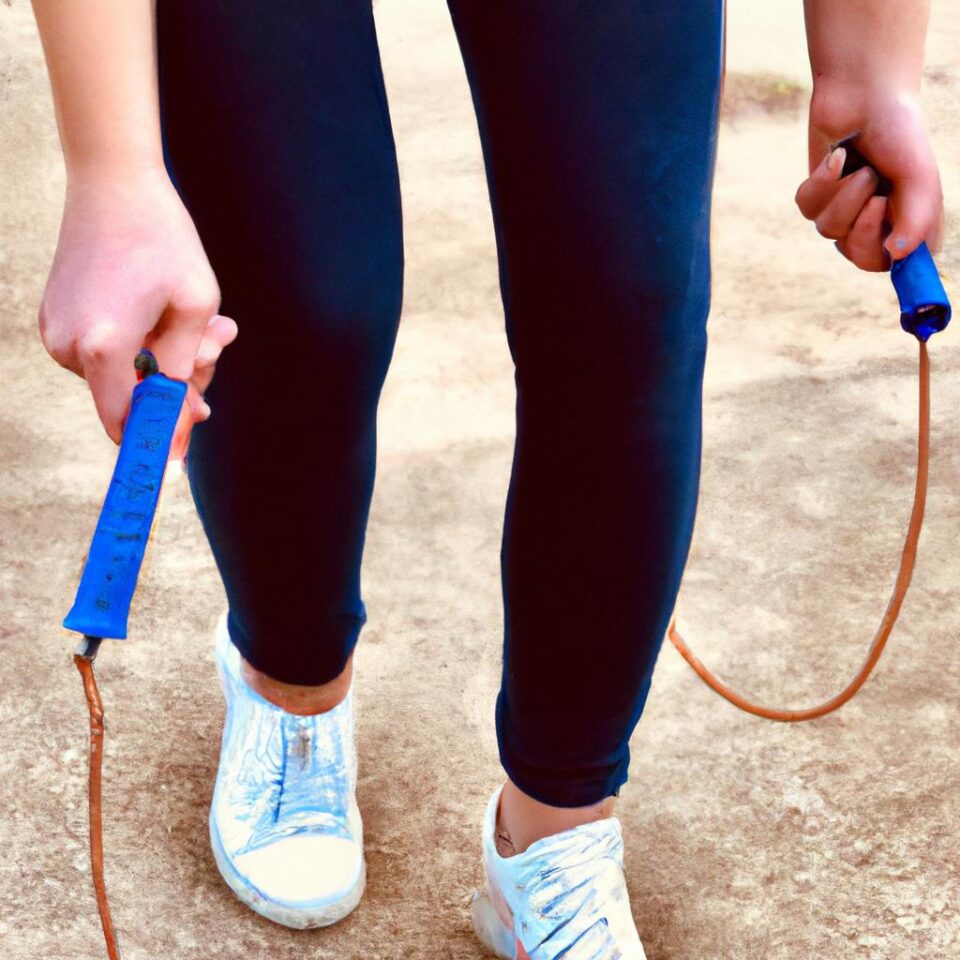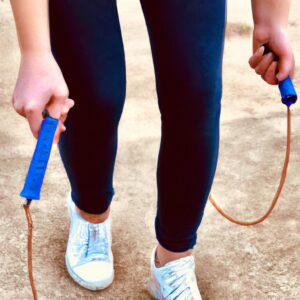What is Functional Fitness?
Functional fitness is an exercise program designed to improve strength, flexibility and coordination. It focuses on movements that help us perform everyday activities better, reducing the risk of injury and improving our quality of life. The goal is to not just be fit, but to be functionally fit – meaning that we are fit for the activities that require us to move, twist, bend, and lift in everyday life.
Functional fitness utilizes a combination of exercises, including weight training, yoga, Pilates and bodyweight exercises. These can be done at home or in a gym and incorporate both dynamic and static moves. By focusing on movements rather than muscles, functional fitness helps strengthen the body as a whole, improving coordination, balance and posture – all of which are important for injury prevention.
Benefits of Functional Fitness
Improving functional fitness has numerous benefits, including:
- Decreased risk of injury
- Increased strength and endurance
- Improved coordination and balance
- Better posture
- Enhanced mobility, flexibility, and range of motion
- Increased energy levels and improved mood
- Greater ability to perform everyday activities
Functional fitness is an excellent way to stay healthy and injury-free, and is suitable for people of all ages and fitness levels. Whether you’re looking to get back in shape after injury or surgery, or just want to stay active and make the most out of your daily movement, functional fitness is a great program to follow.
Warm-up and Prehab Exercises
Functional fitness isn’t only about strength and power. An equally important part of any functional fitness program is warming up and prehab. Warm-ups are great for improving muscle activation and preparing the body for activity. Prehab exercises can help reduce the risk of injuries by targeting muscle imbalances and limitations before they become an issue.
Here are some examples of warm-up and prehab exercises that can help you get the most out of your workouts and reduce the risk of injury:
- Movement drills: Movements such as walking, jogging, jumping jacks, and arm circles help increase blood flow throughout the body and warm up the muscles.
- Dynamic stretches: Dynamic stretching helps improve range of motion and mobility in the joints. Examples include leg swings, hip swings, arm circles, and inchworms.
- Activation exercises: Activation exercises are designed to increase the activation of muscles groups, including the glutes, core, and upper back. Examples include resistance band pull-aparts, glute bridges, and planks.
By taking the time to warm up and do some targeted prehab exercises before your workouts, you will improve your performance and reduce your risk of injury.
Core Training
Having a strong and stable core is essential for functional fitness. Building core strength helps to improve posture, balance, and coordination, all of which help to reduce the risk of injury. Core strength also helps protect the spine during everyday activities like lifting, standing, and bending.
There are many exercises that can be done to build durable core strength and stability. Some of the best exercises for core strength include planks, sit-ups, Russian twists, and glute bridges. Planks are a great exercise for strengthening the deep core muscles and improving spinal stability. Sit-ups are good for targeting the larger muscles of the abdominal area. Russian twists help to strengthen the obliques, and glute bridges are excellent for working the glutes and lower back muscles.
Core strength exercises should be done two to three times a week for optimal results. Start with 10-15 repetitions per set and gradually increase as you become stronger. Do not forget to use proper form when doing core exercises – it is important to keep the spine in a neutral position throughout the exercise to avoid injury.
Lower Body Exercises
The lower body is integral to many of the daily movements we take for granted like walking, running, and jumping. Lower body strength also helps prevent injury when lifting heavy objects or taking part in activities that involve quick changes in direction. Working on the muscles of the lower body is important for overall strength, mobility, and stability.
One of the most beneficial exercises for the lower body are single-leg exercises. By adding a single-leg element to a lower-body movement, you can increase the intensity and challenge your ability to maintain balance and stability. Some examples of single-leg exercises include Bulgarian Split Squats, Single-Leg Deadlifts, and Reverse Lunges.
Bilateral exercises, which require both legs to work together, are also key for creating balance in the lower body. Squats, deadlifts, and lunges are all classic examples of bilateral exercises. These exercises should be used to build strength and muscle size, as well as to improve coordination between the legs.
Finally, integrating different movement patterns together is an effective way to create a complete lower body workout. Combining unilateral exercises (single-leg movements) and bilateral exercises into one workout will allow you to target and challenge all areas of the lower body, creating greater mobility and injury prevention.
Upper Body Exercises
Your upper body strength is important for everyday tasks like lifting items, doing housework, and even playing with your kids. Building strong and balanced upper body muscles can help reduce the risk of injury and help you move more efficiently. Here are some examples of upper body exercises you can do to build strength in your shoulders, chest, arms, and back.
Pushing
Pushing exercises help target the chest muscles, triceps, and shoulders. Examples include push-ups, bench presses, shoulder presses, and triceps dips.
Pulling
Pulling exercises help target the back muscles, biceps, and shoulders. Examples include pull-ups, chin-ups, rows, and lateral raises.
Rotational
Rotational exercises help target the muscles around the spine such as the rotator cuff muscles, as well as the abdominals and shoulders. Examples include twisting exercises such as Russian twists and woodchops.
Incorporating these exercises into your workout routine can help you build strong and balanced upper body muscles which will help you move more efficiently throughout your day and help reduce the risk of injuries.
Balance Exercises
Balance and stability are essential components of functional fitness. Training your balance helps to improve coordination, strength and overall body control. Balance exercises can also help prevent injuries related to falls when you’re engaging in complex movements or activities. Here are some examples of balance exercises you can include in your functional fitness workouts:
- Single-Leg Deadlifts – Stand on one leg and hinge at the hips while keeping your spine neutral and reach towards the floor. Return to the start position and repeat eight times before switching legs.
- Single-Leg Squats – Stand on one leg and slowly lower your body into a squat. Keep your core engaged and your spine neutral. Return to the starting position and repeat eight times before switching legs.
- Standing Single-Leg Calf Raises – Stand on one leg with your toes pointed out, and push through the heel to raise the body. Hold for a few seconds and then return to the starting position. Repeat eight times before switching legs.
- Bosu Ball Squats – Place a Bosu ball in front of you and stand with your feet shoulder-width apart. Slowly squat down while using the ball for balance. Return to the starting position and repeat 8 times.
- Bird Dog – Start on all fours and extend one arm out in front while simultaneously extending the opposite leg back. Hold for a few seconds and switch sides. Repeat eight times.
- Single-Leg Reach – Stand with one foot slightly behind the other and reach the opposite hand towards the front foot. Hold for a few seconds and switch sides. Repeat 8 times.
Balance exercises are important for injury prevention and improving everyday movement. Incorporating these exercises into your functional fitness program can help you become stronger, more stable, and less likely to suffer from an injury.
Finishers for Functional Fitness
A finisher is a great way to end a workout, giving it an extra dimension and helping to ensure your body has recovered from the activity. Finishers can also be used as a cool-down to help relax your muscles and reduce the risk of injury and soreness. There are many different options when it comes to finishers, so you can choose exercises that best suit your needs and fitness level.
One popular finisher is the plank circuit. This involves holding each of the four major plank positions (forearm, high plank, side plank, and stability ball plank) for 30-60 seconds each, with minimal rest in between. For a more challenging finisher, you could add in some light movements like planks with legs lifts or mountain climbers to increase the intensity.
Another great finisher is the bodyweight circuit. Here you can choose a few exercises such as squats, lunges, push-ups, burpees, and jumping jacks and perform them in a circuit for 45-60 seconds each. This type of finisher can be easily modified to suit your ability level by increasing or decreasing the number of reps, or the length of the interval.
Other finishers include core work such as ab wheels, Russian twists, and bicycle crunches. You can also use lighter weights and perform higher volume sets such as bicep curls, tricep extensions, and shoulder presses. Finally, some yoga poses can be used to stretch and relax the body, helping to improve flexibility.
No matter what type of finisher you choose, it’s important to focus on good form and technique. Be sure to listen to your body and gradually work up to more challenging exercises and longer intervals as you become stronger.
The Benefits of Functional Fitness
Functional fitness is an important part of any exercise regimen designed to prevent injury and promote everyday movement. This type of training focuses on movements that mimic real-life activities, such as standing, squatting, pushing, pulling, etc., providing a greater level of strength, stability, control, and mobility in the musculoskeletal system. Functional exercise helps you to move better and feel better, improving your overall health and fitness.
Functional fitness exercises target all three planes of motion, and develops neuromuscular control, allowing you to move more efficiently and with greater coordination. Not only can functional exercise help improve physical performance in sports and everyday activities, but it can also reduce the risk of injury due to imbalances or poor coordination.
By investing in functional fitness, you can maximize your performance while reducing your risk of injury. In addition, this type of exercise is low-impact and can help reduce pain and discomfort associated with some of the more traditional forms of exercise.
comments: 0

